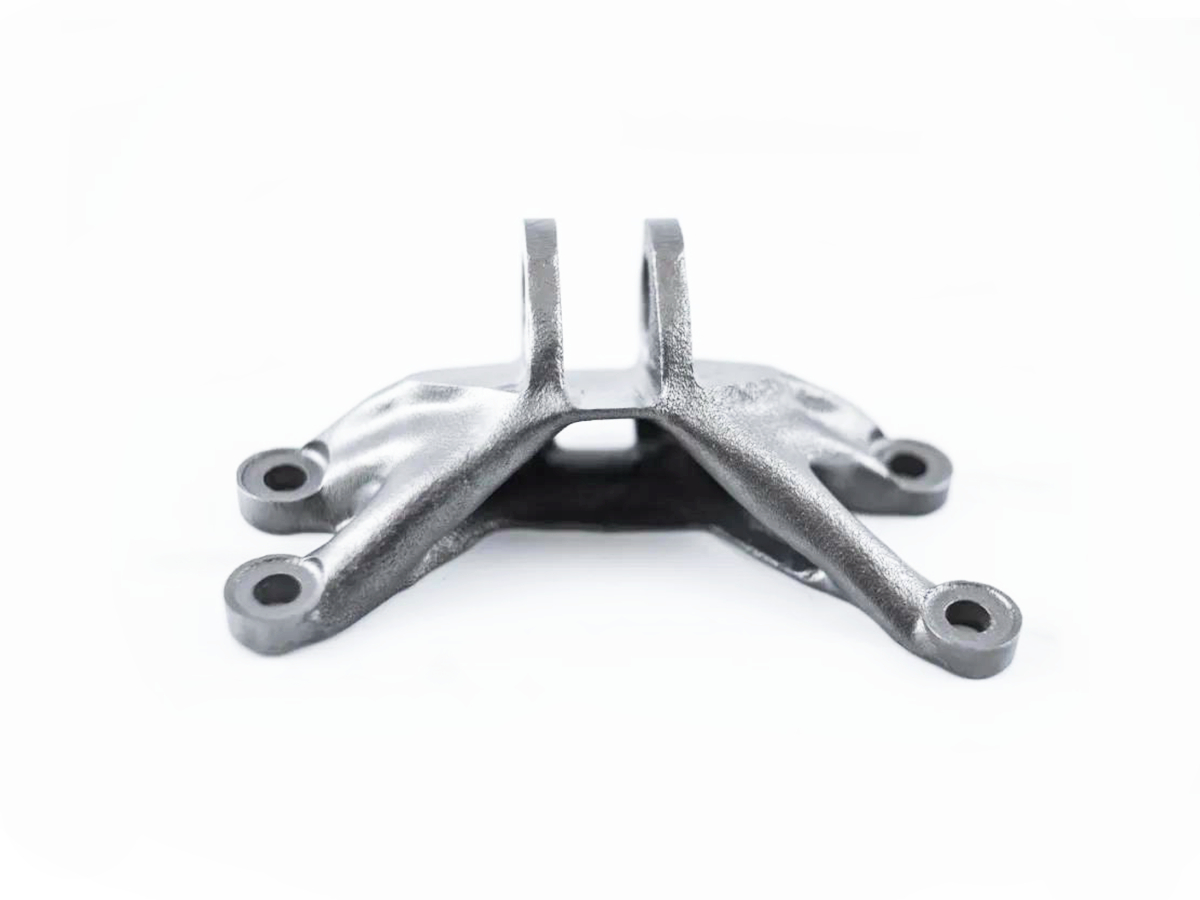Carbon Steel 3D Printing: High-Strength Solutions for Industrial Applications
Introduction to Carbon Steel 3D Printing
Carbon steel is widely used in industrial applications due to its high strength, toughness, and versatility. These characteristics make it ideal for producing durable automotive, manufacturing, and construction components. Carbon steel 3D printing combines the traditional advantages of carbon steel with the flexibility and precision of additive manufacturing, enabling the production of custom parts with intricate geometries and high performance under extreme conditions.
At Neway 3D Printing, we specialize in carbon steel 3D printing using high-quality materials like carbon steel alloys such as AISI 4130, AISI 4140, and 20MnCr5 to produce parts with exceptional mechanical properties. Whether for prototypes, functional parts, or end-use components, our carbon steel 3D printed parts are engineered to meet the demands of industrial applications with high precision and strength.
Material Performance Matrix
Material | Temperature Resistance (°C) | Corrosion Resistance (ASTM B117 Salt Spray) | Wear Resistance (Pin-on-Disc Test) | Ultimate Tensile Strength (MPa) | Application |
|---|---|---|---|---|---|
540 | Good (1200 hours) | Medium (CoF: 0.4) | 680 | Automotive, Aerospace | |
600 | Moderate (1000 hours) | High (CoF: 0.35) | 850 | Manufacturing, Robotics | |
500 | Moderate (800 hours) | High (CoF: 0.3) | 950 | Automotive, Gear Systems | |
700 | Good (1500 hours) | Very High (CoF: 0.2) | 1100 | Tooling, Die Casting |
Material Selection Guide for Carbon Steel 3D Printing
When selecting carbon steel materials for 3D printing, consider the following factors:
Temperature Resistance: For applications exposed to moderate heat, materials like AISI 4130 (540°C) and AISI 4140 (600°C) offer excellent performance and are ideal for automotive and aerospace components.
Corrosion Resistance: Materials like AISI 4130 and AISI 4140 offer good to moderate corrosion resistance, making them suitable for applications in automotive and manufacturing sectors where parts are exposed to moderate environmental conditions.
Wear Resistance: For parts subjected to wear and friction, AISI 4140 and 20MnCr5 provide high wear resistance, making them perfect for automotive and gear system components.
Strength Requirements: AISI 4140 (850 MPa tensile strength) and 20MnCr5 (950 MPa tensile strength) offer exceptional mechanical properties, ideal for load-bearing components and industrial machinery.
Process Category Matrix for Carbon Steel 3D Printing
Process | Material Compatibility | Build Speed | Precision | Surface Finish |
|---|---|---|---|---|
AISI 4130, AISI 4140, 20MnCr5 | High (50-100 mm/h) | Very High (±0.05mm) | Fine (Ra < 10 µm) | |
AISI 4130, AISI 4140, 20MnCr5 | High (50-100 mm/h) | Very High (±0.05mm) | Fine (Ra < 10 µm) | |
AISI 4130, AISI 4140 | Low (5-25 mm/h) | High (±0.1mm) | Rough (Ra > 20 µm) | |
AISI 4130, AISI 4140 | Moderate (30-60 mm/h) | High (±0.1mm) | Smooth to Fine |
Process Performance Insights:
Direct Metal Laser Sintering (DMLS): Known for high precision and fine surface finish (Ra < 10 µm), DMLS is ideal for producing parts that require tight tolerances and smooth surfaces. Commonly used for aerospace and automotive applications where strength and intricate geometries are essential.
Selective Laser Melting (SLM): Offers high-speed production with excellent precision, making it ideal for structural components and load-bearing parts, such as automotive and industrial machinery components.
Electron Beam Melting (EBM): Suitable for high-performance parts exposed to extreme temperatures, particularly in aerospace and energy applications. It provides strong material properties, though the surface finish may be rougher.
Powder Bed Fusion (PBF): Known for its excellent precision and smooth surface finish, PBF is perfect for creating parts with tight tolerances and complex geometries, making it ideal for automotive, aerospace, and medical applications.
Process Selection Guide for Carbon Steel Parts
Direct Metal Laser Sintering (DMLS): Ideal for parts requiring high precision and smooth surfaces. DMLS is perfect for complex aerospace and automotive components, where intricate geometries are critical.
Selective Laser Melting (SLM): Best suited for high-strength, high-performance components, particularly in aerospace and automotive industries. SLM ensures high-quality production of functional parts with complex designs.
Electron Beam Melting (EBM): Recommended for components exposed to extreme temperatures and heavy loads, ideal for aerospace and energy applications.
Powder Bed Fusion (PBF): Best for parts requiring high precision and smooth finishes, making it suitable for medical, automotive, and aerospace applications that require intricate designs.
Case In-Depth Analysis: Carbon Steel 3D Printed Automotive and Industrial Components
Automotive Industry: We produced custom gear systems for a major automotive manufacturer using AISI 4140 via SLM. The high strength and wear resistance made it ideal for the high-stress components. The SLM process allowed us to create parts with complex internal geometries that optimized performance and reduced weight.
Industrial Manufacturing: For a heavy machinery application, we used 20MnCr5 to produce high-performance components with DMLS. The material’s excellent wear resistance and toughness made it perfect for critical load-bearing parts in industrial machinery. The DMLS process ensured precision and repeatability in large-scale production runs.
FAQs
What are the advantages of using carbon steel in 3D printing for automotive applications?
How does DMLS work with carbon steel materials like AISI 4140?
What are the best carbon steel materials for industrial components?
How does SLM improve the quality of carbon steel components in aerospace?
What are the wear resistance benefits of using 20MnCr5 for automotive components?

